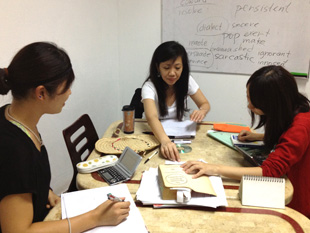 |
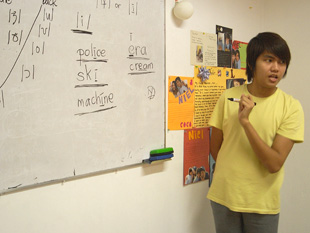 |
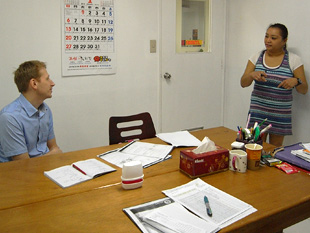 |
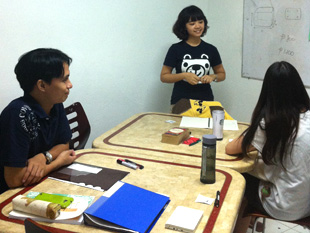 |
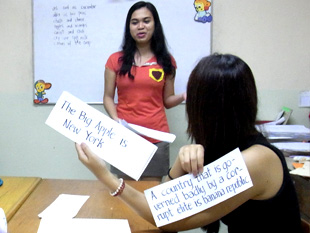 |
“世界で最もお得な英語教師” – BBC Newsより
フィリピンは観光省によると、米国・英国に次ぐ世界第3位の英語話者国として自国を売り出しています。
シンガポール、香港、台湾といった周辺国や欧米諸国と比べて物価が安く、
フィリピンは今や**“世界で最もコストパフォーマンスの高い英語教師”**として急成長中です。
英語を学ぶため、あるいは英語で授業が行われる大学に進学するために、
近年ますます多くの留学生がフィリピンを訪れています。
昨年だけで、韓国、日本、台湾、さらにイラン、リビア、ブラジル、ロシアなどから約3万人の外国人学生がフィリピンにやってきました。
競争の激しい国際的な英語学習市場において、フィリピンは他国と肩を並べる可能性を秘めています。
フィリピンがかつてアメリカの植民地だった影響で、
多くのフィリピン人がアメリカンアクセントの英語を話します。
これはシンガポールやマレーシアといった、イギリス寄りの発音が主流の他の東南アジア諸国とは大きく異なる点です。
英語圏ではない国から来た学生にとって、英語が生活の中に溶け込んでいるフィリピンに長期滞在することで、
自然と日常の中で英語を使う機会が得られるのは大きな利点です。
フィリピンは人件費が安いため、欧米と比べても圧倒的に安く、
マンツーマンの英会話トレーニングを受けることができます。
多くの学生がここで英語を話せるようになるのは、講師の質の高さだけでなく、
英語漬けの環境に強制的に飛び込むことになるからです。
他国での英語留学に比べて3〜4倍も安いこの体験。
それはまさに、あなたの人生を変えるかもしれない価値ある挑戦です。
もう迷う必要はありません。
ぜひこのチャンスを活かして、人生が変わる留学体験を体感してみてください!
 |
 |
 |
 |
 |

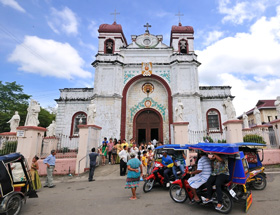
セブ市は、フィリピンの伝統と近代文化が融合した「るつぼ(melting pot)」のような都市です。
この地は1521年、ポルトガル人の探検家マゼランによって初めて発見されました。
セブ島は、ビサヤ諸島の中心に位置しており、フィリピンの群島に囲まれています。
一年を通して過ごしやすい気候に加え、透き通るような海、柔らかな砂浜、
ヤシの木に囲まれた漁村が点在する美しい自然が広がっています。
この自然美と豊かでユニークな文化は、国内外の旅行者にとって大きな魅力となっています。
現在セブ市は、首都マニラに次ぐフィリピン第2の都市で、人口は約180万人。
また、国内最大級の海運拠点としても知られ、フィリピンの国内船会社のおよそ80%がこの地に拠点を置いています。
このエキゾチックな南国都市は、
「フィリピン南部の首都」
「南の女王都市(Queen City of the South)」
「次なる経済奇跡(The Next Economic Miracle)」
などの異名を持ち、訪れた人を息をのむような絶景と活気ある都市の雰囲気で魅了し続けています。
Who can enter the Philippines without entry visa?
Updated at: January 2020
A. Aliens from these countries may enter the Philippines without a visa, for an initial 30-days:
| 1. Andorra
2. Angola 3. Antigua and Barbuda 4. Argentina 5. Australia 6. Austria 7. Bahamas 8. Bahrain 9. Barbados 10. Belgium 11. Belize 12. Benin 13. Bhutan 14. Bolivia 15. Botswana 16. Brazil* 17. Brunei 18. Bulgaria 19. Burkina Faso 20. Burundi 21. Cambodia 22. Cameroon 23. Canada 24. Cape Verde 25. Central African Republic 26. Chad 27. Chile 28. Colombia 29. Comoros 30. Congo 31. Congo, Democratic Republic 32. Costa Rica 33. Cote d’Ivoire 34. Croatia 35. Cyprus 36. Czech Republic 37. Denmark 38. Djibouti 39. Dominica 40. Dominican Republic 41. Ecuador 42. El Salvador 43. Equatorial Guinea 44. Eritrea 45. Estonia 46. Ethiopia 47. Fiji 48. Finland 49. France 50. Gabon 51. Gambia 52. Germany 53. Ghana 54. Greece |
55. Grenada
56. Guatemala 57. Guinea 58. Guinea-Bissau 59. Guyana 60. Haiti 61. Honduras 62. Hungary 63. Iceland 64. Indonesia 65. Ireland 66. Israel* 67. Italy 68. Jamaica 69. Japan 70. Kazakhstan 71. Kenya 72. Kiribati 73. Korea (ROK) 74. Kuwait 75. Kyrgyzstan 76. Laos 77. Latvia 78. Lesotho 79. Liberia 80. Liechtenstein 81. Lithuania 82. Luxembourg 83. Madagascar 84. Malawi 85. Malaysia 86. Maldives 87. Mali 88. Malta 89. Marshall Island 90. Mauritania 91. Mauritius 92. Mexico 93. Micronesia 94. Monaco 95. Mongolia 96. Morocco 97. Mozambique 98. Myanmar 99. Namibia 100. Nepal 101. Netherlands 102. New Zealand 103. Nicaragua 104. Niger 105. Norway 106. Oman 107. Palau 108. Panama |
109. Papua New Guinea
110. Paraguay 111. Peru 112. Poland 113. Portugal 114. Qatar 115. Romania 116. Russia 117. Rwanda 118. St. Kitts and Nevis 119. Saint Lucia 120. St. Vincent and the Grenadines 121. Samoa 122. San Marino 123. Sao Tome and Principe 124. Saudi Arabia 125. Senegal 126. Seychelles 127. Singapore 128. Slovak Republic 129. Slovenia 130. Solomon Islands 131. South Africa 132. Spain 133. Suriname 134. Swaziland 135. Sweden 136. Switzerland 137. Tanzania 138. Tajikistan 139. Thailand 140. Togo 141. Trinidad and Tobago 142. Tunisia 143. Turkey 144. Turkmenistan 145. Tuvalu 146. Uganda 147. United Arab Emirates 148. United Kingdom of Great Britain and Northern Ireland 149. United States of America 150. Uruguay 151. Uzbekistan 152. Vanuatu 153. Vatican 154. Venezuela 155. Vietnam 156. Zambia 157. Zimbabwe
|
*Brazilians and Israelis are given 59-day stay based on existing agreements.
B. Indians may be granted a visa-free entry for an initial stay not exceeding 14 days under the Foreign Service Circular No. 36-12, provided, that they possess:
The 14-day visa-free entry may be extended by an additional seven days for a maximum 21 days.
C. Under Foreign Service Circular (FSC) No. 112-11, the following may enter the Philippines for an initial stay not exceeding seven days provided that they possess a return or onward ticket:
Seven-day visa-free entry may be extended by an additional 14 days to complete a maximum 21 days.
HK-SAR passport holders may enter the Philippines for an initial 14 days.
D. Under FSC 122-11, Macau-SAR passport holders may enter the Philippines for an initial 14 days, provided, that they possess a return or onward ticket.
E. Under Operations Order No. SBM-2015-018, MECO ETA holders may enter the Philippines for an initial 30 days.
F. If you belong the countries that require visa, simply apply from the nearest Philippines embassy from your residence